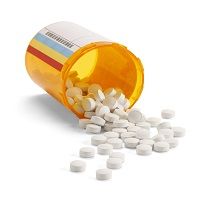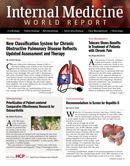Publication
Article
Internal Medicine World Report
Mental Health Drugs: High Risk for Adverse Events
Author(s):
Prescription medications for mental health diagnoses (e.g. antidepressants, antipsychotics, and mood stabilizers) consume approximately 25% of commercial health insurers' pharmacy budgets and almost 35% of public payers' pharmacy spending. In 2011, an estimated 26.8 million US adults-more than 11%-took prescription medications for mental illness.

Prescription medications for mental health diagnoses (e.g. antidepressants, antipsychotics, and mood stabilizers) consume approximately 25% of commercial health insurers’ pharmacy budgets and almost 35% of public payers’ pharmacy spending. In 2011, an estimated 26.8 million US adults—more than 11%—took prescription medications for mental illness. A new study in the September 2014 issue of JAMA Psychiatry reports American emergency departments (ED) see patients who take these medications often. What are they seeing? Adverse drug events (ADE).
This report was a collaborative effort between researchers at the Centers for Disease Control and Prevention and Johns Hopkins University in Baltimore, MD. They estimated the rates of adverse drug event emergency department (ADE ED) visits involving psychiatric medications between January 1, 2009, and December 31, 2011. US adults older than 19 years were included.
The researchers identified slightly fewer than 90,000 psychiatric medication ADE ED visits annually, with almost half occurring in the age 19 to 44 groups. Among all ADE ED visits, 19.3% lead to hospitalization indicating the problem causes considerable burden to the health are system.
Zolpidem was the most common cause of ED visit; in patients aged 65 and older, this was implicated in 1 in 5 ADE ED visits. In younger adults, it precipitated 1 in 10 visits. The US Drug Abuse Warning Network previously reported that ED visits for zolpidem ADEs increased 220% from 2005 to 2010. This drug is closely associated with increased risk of falls.
Antipsychotics and lithium salts precipitated significantly more ED visits than other medications relative to the number of outpatient visits at which they were prescribed. Antipsychotics were related to 11.7 ADE ED visits per 10 000 outpatient prescription visits. Lithium salts accounted for 16.4 per 10 000 outpatient prescription visits.
Movement disorders and spasticities were the most common antipsychotic ADE problem, and clinicians identified the typical antipsychotic haloperidol as the most prevalent agent. Atypical antipsychotics, promoted as significantly less likely to cause ADE than typical antipsychotics, were associated with twice as many ADE ED visits per 10,000 outpatient prescription visits as any antidepressant, sedative and anxiolytic, or stimulant class. The researchers note clinicians prescribe 60% of atypical antipsychotics and 64%of typical antipsychotics off-label. More than half of off label indications are not supported by evidence and the researchers indicate off label use often caused ADE ED visits.
The researchers conclude, “Efforts to reduce ADEs from therapeutic use of psychiatric medications should include adults of all ages but might first focus on medications causing high numbers and rates of ED visits.”






